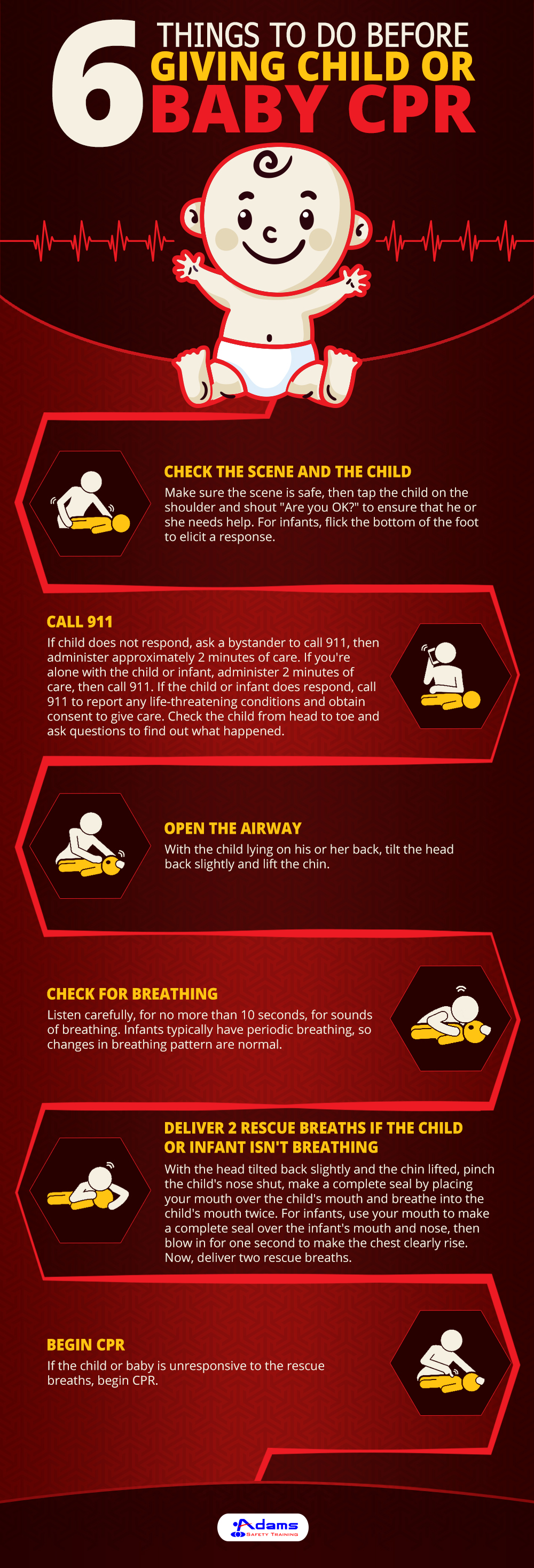This info-graphic titled ‘6 Things to do Before Giving Child or Baby CPR’ provides us an overview of things to note before providing CPR to Children or Infants.CPR or cardiopulmonary resuscitation is a recognized emergency life-saving procedure that is done when someone’s breathing or heartbeat has halted. This may occur after an electric shock, heart attacks, or drowning.CPR blends rescue breathing and compressions for chest. Rescue breathing supplies oxygen to the person’s lungs while Chest compressions keep oxygen-rich blood flowing until the heartbeat and breathing are restored.
Permanent damages to brain or even death can occur within minutes if blood flow stops. Thus, it is important that blood flow and breathing be continued until qualified medical help arrives. Emergency operators available on 911 can guide you through the process.CPR techniques vary hugely depending on the age or size of the person. There are different techniques for adults and children who have reached puberty, and babies less than 1 year of age. Some basic things to keep in mind while resuscitating infants are enlisted down. For more information, please refer to the info-graphic below.


